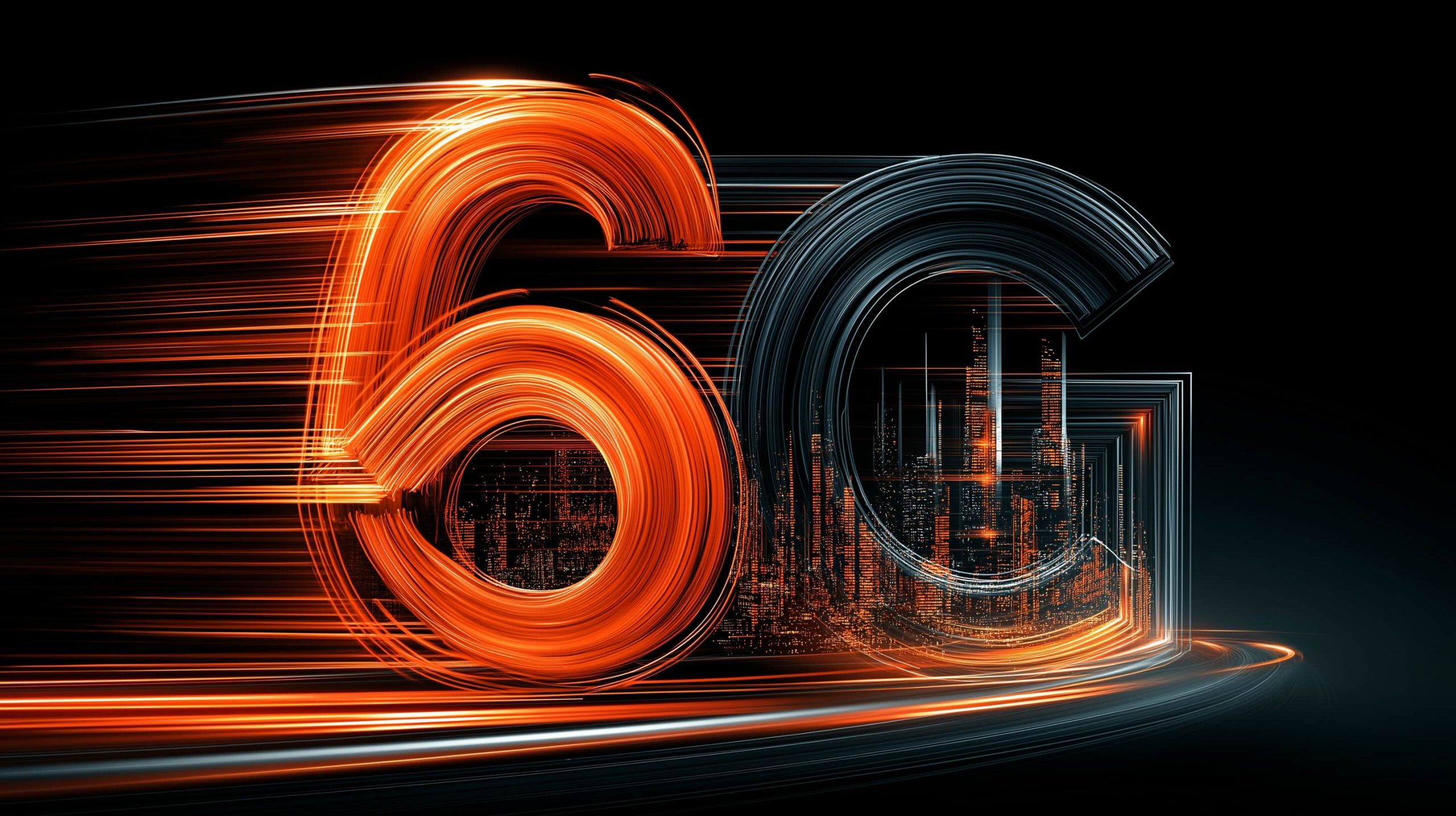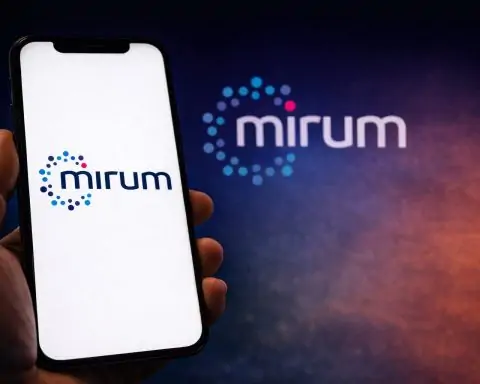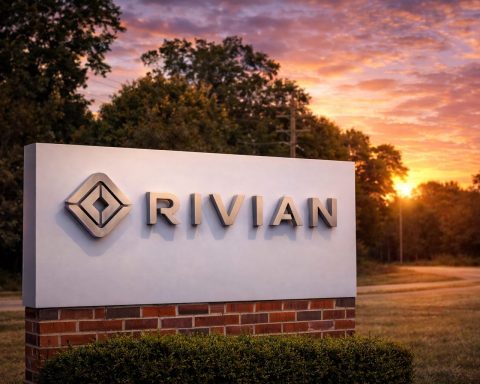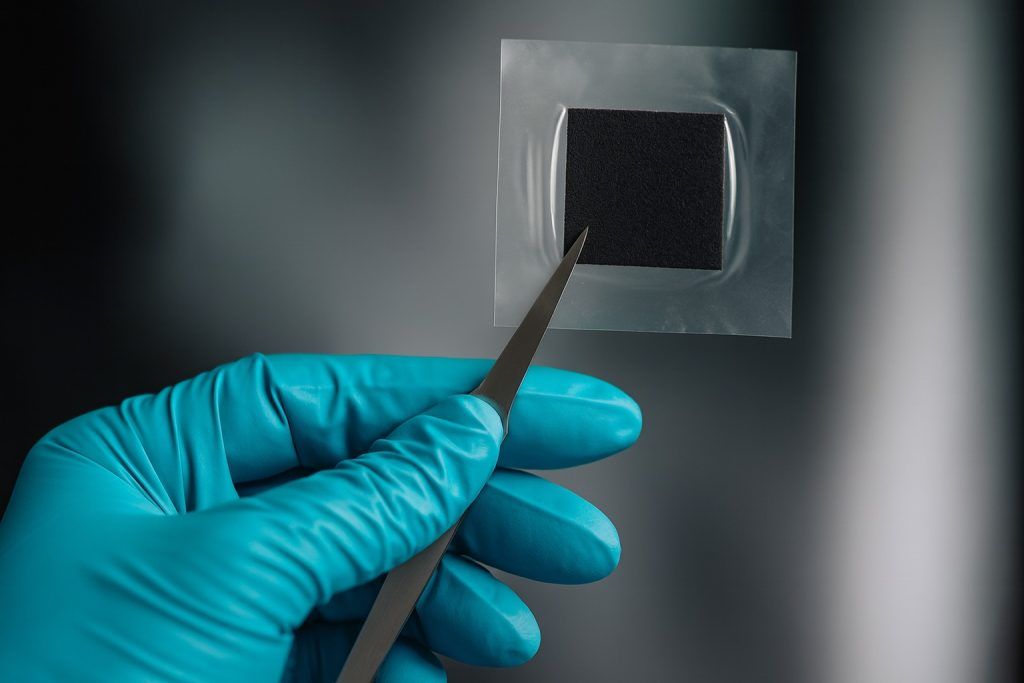- The June 2021 Samsung-UCSB demonstration achieved 6.2 Gbps real-time throughput at 140 GHz over 15 meters using 2 GHz of bandwidth and a 128-element phased-array.
- Samsung notes terahertz wideband channels could eventually support Tbps peak speeds and cut air latency to one-tenth of 5G’s.
- Samsung obtained FCC approval in late 2021 to trial 6G transmissions in the 133–148 GHz band at its Texas lab.
- Qualcomm’s 6G Foundry is a broad R&D program spanning spectrum, waveforms, AI-native networking, and integrated sensing, not a single device.
- Qualcomm demonstrated 50–70% capacity gains in legacy FDD bands through waveform evolution and MIMO without changing cell-site hardware.
- Qualcomm showcased a 13 GHz Giga-MIMO base station with 4,096 antennas delivering about 2.3× the downlink throughput of a standard 3.5 GHz 5G site while reusing existing cell locations.
- LG Electronics and Fraunhofer HHI achieved a 320-meter outdoor link in the 155–175 GHz band with amplifiers above 20 dBm and low-noise receivers, aiming for 1 Tbps speeds.
- In late 2023 a Japan consortium of NTT DoCoMo, NEC, and Fujitsu unveiled a sub-terahertz device operating in 100 GHz and 300 GHz bands capable of 100 Gbps over 100 meters.
- 0.3 THz demos include LG’s 320 m 155–175 GHz link and NTT DoCoMo/NEC/Fujitsu’s 100 Gbps over 100 m in the 100–300 GHz range, indicating multi-gigabit-plus potential.
- Industry consensus targets 6G standards around 2028 (3GPP Release 21) with commercialization around 2030, with Samsung aiming for 2028–2030 and Nokia Bell Labs predicting a 2028 spec and a 2030 launch.
Introduction: The Race to 6G Terahertz Speeds
The wireless industry is hurtling toward the 6G era, where data may transmit at terahertz frequencies with fiber-optic-like speeds. In labs across the globe, engineers are already experimenting in bands far above today’s 5G frequencies – from Samsung’s 140 GHz testbed pushing multi-gigabit links [1], to Qualcomm’s 6G Foundry initiative rethinking networks from AI to spectrum use [2]. Even other industry players, like LG and NTT DoCoMo, have demonstrated 0.3 THz-range wireless links that hint at ultra-fast 100 Gbps data rates [3]. This report dives into each of these efforts – the recent breakthroughs, the frequency bands and use cases they target, and what these early 6G demos mean for consumers and mobile infrastructure as we race toward 2030 for 6G’s debut.
Samsung’s 140 GHz 6G Testbed: Breaking the Terahertz Barrier
Samsung has staked an early claim in the 6G arena with an end-to-end 140 GHz wireless prototype that marks one of the first successful forays into sub-terahertz spectrum [4] [5]. In a June 2021 demonstration with the University of California, Santa Barbara, Samsung achieved a real-time 6.2 Gbps throughput over a 15 meter distance at 140 GHz using 2 GHz of bandwidth, enabled by a fully digital 16-channel phased-array system [6]. “We believe new spectrum opportunities in the THz band will become a driving force of 6G technology,” said Samsung’s Sunghyun Choi, head of the company’s Advanced Communications Research Center [7]. The potential is enormous – Samsung notes that terahertz wideband channels could eventually support terabit-per-second peak speeds (up to 50× faster than 5G) and cut air latency to one-tenth of 5G’s, unlocking hyper-connected experiences like extended reality and mobile holograms [8].
Samsung’s 140 GHz testbed not only proved that ultra-high-frequency wireless is feasible, but also tackled technical hurdles in the THz realm. The prototype employed custom CMOS RFICs and a 128-element antenna array to beamform the signal, along with adaptive algorithms to counter severe path loss at these frequencies [9]. By using fast beam-steering and high-gain antennas, the system maintained a stable link – a critical step given THz signals’ limited range and penetration. “Working together with UCSB, we’ve overcome many technological challenges and developed this new THz proof-of-concept system,” noted Charlie Zhang, Samsung’s Senior VP for Standards Research, emphasizing that such collaboration “brings 6G and THz communication closer to reality.” [10] The success prompted Samsung to extend testing: by late 2021, it obtained FCC approval to trial 6G transmissions in the 133–148 GHz band at its Texas lab [11].
Use cases and outlook: Samsung envisions these THz-band advances enabling unprecedented applications. Think truly immersive AR/VR, cloud-synced holographic calls, and massive machine connectivity – what it dubs “6G hyper-connectivity services” [12]. The company’s 6G white paper even projects some 500 billion devices (largely machines) could be connected by 2030 when 6G matures [13]. Of course, realizing that vision means years of R&D ahead. Samsung is targeting around 2030 for 6G commercialization [14], aligning with a broader industry timeline. In the meantime, its 140 GHz testbed serves as a blueprint for future 6G hardware – from new chipsets and antennas to algorithms – that will turn terahertz waves into reliable mobile networks.
Qualcomm’s 6G Foundry: An R&D Blueprint for Next-Gen Wireless
While Samsung breaks hardware barriers, Qualcomm’s 6G Foundry initiative is crafting the overall game plan for next-gen wireless. Announced as a comprehensive R&D and thought-leadership effort, Qualcomm’s 6G Foundry spans “essential innovation areas across the entire wireless system.” It’s not a single testbed or product, but a series of explorations into what 6G should be – from new spectrum bands and waveforms to network architecture and AI-driven services [15]. “Welcome to the 6G Foundry, where we explore the next generation of wireless connectivity,” Qualcomm introduced in an initial blog, framing it as a way to apply lessons from 4G and 5G to shape a more flexible, efficient 6G network [16]. In practice, this has led Qualcomm to investigate everything from sub-THz radios to smarter use of existing bands, with a keen eye on practicality and ROI for carriers.
Spectrum and efficiency focus: A key philosophy from Qualcomm is that 6G isn’t only about jumping to exotic frequencies – it’s also about “making better use of what we already have.” Qualcomm’s engineers emphasize boosting performance in lower bands and mid-bands alongside exploring high bands [17] [18]. “A new G is not just [about] a new band…when you upgrade, you should even upgrade existing bands to see some performance benefit,” explains Tingfang Ji, a VP of engineering at Qualcomm [19]. For instance, by evolving waveforms and MIMO techniques, Qualcomm has demonstrated 50–70% capacity gains in legacy FDD bands without changing out cell-site hardware [20] [21]. This “high-efficiency 6G” approach (Qualcomm calls 6G “the high efficiency G” [22]) means current cellular spectrum could carry far more data via 6G tech like advanced coding, smarter antennas, and AI-optimized signaling.
At the same time, Qualcomm is tackling the higher frequencies that will expand 6G’s capabilities. The company has prototyped an “upper mid-band” Giga-MIMO system around 7–13 GHz that uses massive 4,096-antenna arrays to achieve coverage comparable to today’s mid-band 5G, but with much higher capacity [23] [24]. In tests, a 13 GHz Giga-MIMO base station delivered ~2.3× the downlink throughput of a standard 3.5 GHz 5G site, yet could reuse the same cell locations – no extra densification needed [25]. “You can reuse the same site…no need to densify, and yet you can have good indoor coverage at higher frequencies,” Ji noted, highlighting how scaling up antenna elements can overcome propagation loss at 6G’s higher bands [26]. Qualcomm is also looking toward true terahertz territory: at MWC 2024, it showcased point-to-multipoint communications in the 140 GHz band, hinting that it’s developing sub-THz prototypes as well (even if specifics are under wraps) [27].
Intelligent networks and AI: Another pillar of Qualcomm’s 6G vision is AI-native networking. The 6G Foundry has explored how wireless AI can redesign the air interface itself. Rather than hand-coding all radio parameters, future 6G could use machine learning to optimize waveforms and protocol behavior on the fly [28] [29]. In one collaboration, Qualcomm and Nokia Bell Labs showed that an AI-trained system for massive MIMO feedback could improve throughput by 15–95% compared to the traditional 5G approach [30]. This hints at 6G base stations that continuously learn and adapt – yielding smarter, more efficient networks. “Instead of fixed, specified behavior…you can let AI take actual user performance into consideration,” says Ji, describing a future where networks self-optimize in real time [31]. Qualcomm’s work with integrated sensing and communications (ISAC) also suggests 6G networks will double as sensors, mapping the environment for applications like autonomous vehicles or smart cities. All told, the 6G Foundry paints 6G as a convergence of extreme connectivity + extreme computing, where advances in silicon, software, and spectrum all intertwine. The initiative serves as Qualcomm’s blueprint to ensure that when 6G standards solidify (likely by 2028), the company will have the chipsets and technologies ready to translate this ambitious vision into commercial devices.
0.3 THz Demos: Industry-Wide Breakthroughs
Samsung and Qualcomm aren’t alone in chasing the terahertz frontier. Across the industry, several 0.1–0.3 THz range demonstrations have recently hit impressive milestones, underscoring that everyone wants a stake in 6G’s ultra-high frequencies. One headline-grabber came from LG Electronics, which in 2022 announced a successful 6G test at the Fraunhofer Heinrich Hertz Institute in Berlin. LG wirelessly transmitted data in the 155–175 GHz band (a slice of the sub-THz spectrum) over a record 320 meters outdoors, a huge leap from its prior 100 m test [32] [33]. This distance roughly matches the size of a city macro-cell, suggesting terahertz waves can cover at least an urban block. To achieve this, LG and Fraunhofer developed powerful new amplifiers – boosting signal output beyond 20 dBm – and low-noise receivers to overcome the severe path loss at 0.16 THz [34] [35]. “With the success of our latest demonstration, we are one step closer to realizing 6G speeds of 1 terabit per second in both indoor and outdoor environments,” said Dr. Kim Byoung-hoon, LG’s CTO, adding that 6G will be “a major driver of future business and user experiences” [36]. While LG didn’t disclose the exact data rate of the 320 m link, the experiment proved that terahertz signals can go the distance with the right engineering, paving the way for 6G networks that aren’t confined to tiny cells.
Meanwhile in Japan, a consortium led by NTT DOCOMO, NTT, NEC, and Fujitsu has been pushing the envelope on 6G hardware. In late 2023, these partners unveiled a prototype sub-terahertz wireless device operating in the 100 GHz and 300 GHz bands, capable of a staggering 100 Gbps data throughput – roughly 20× faster than current 5G speeds [37] [38]. Equally impressive, this 100 Gbps link is designed to work over 100 meters range, showing that ultra-fast 6G might not be limited to point-blank distances [39]. Each company contributed a piece: NTT developed advanced 300 GHz RF devices, NEC provided a multi-element active phased-array antenna for the 100 GHz band, and Fujitsu innovated new compound semiconductors to amplify and extend the signal [40] [41]. The result is a test system that not only hits unprecedented speeds but also addresses practical issues like beamforming and power efficiency at 0.3 THz. This aligns with Nokia Bell Labs’ vision that “sub-THz will boost peak data rates exceeding 100 Gbps in localized areas” as 6G arrives [42]. Indeed, beyond Japan, European researchers (through programs like Hexa-X) and US teams (via the NSF and Next G Alliance) are also experimenting with sub-THz links, ensuring a global momentum. The consensus from these demos is clear: terahertz frequencies can deliver ultra-high bandwidth, though engineering solutions (e.g. huge antenna arrays, clever waveforms, new materials) will be crucial to overcome their short range and line-of-sight constraints.
Comparing 6G Initiatives: Bands, Speeds, and Use Cases
Each of these 6G initiatives targets the future of connectivity from a slightly different angle. Here’s how Samsung, Qualcomm, and others stack up on key aspects:
- Frequency Bands: Samsung’s testbed zeroes in on the D-band (~140 GHz), right at the lower end of THz, to explore new spectrum far above 5G’s mmWave [43]. Qualcomm’s 6G research spans from sub-10 GHz (enhancing coverage bands) to high mmWave/low THz – it even demoed use of the 140 GHz band for 6G at MWC [44] – reflecting a strategy to utilize multiple bands for 6G. Industry demos by others sit in the 100–300 GHz range: LG used ~155–175 GHz [45], while NTT’s prototype reached up to 300 GHz [46]. All these fall in the so-called sub-terahertz bands (~0.1–0.3 THz) identified as prime 6G candidates.
- Data Rates: Raw speed is a big 6G promise. Samsung’s 140 GHz prototype hit 6.2 Gbps in the early test (with 2 GHz bandwidth) [47], and they predict eventual Tbps peaks as bandwidths widen [48]. Qualcomm hasn’t revealed a specific 6G bit rate yet, but is targeting efficiency gains (e.g. doubling spectral efficiency in some bands) [49] that will translate to higher throughput per Hz. Other players have set records: the NTT/NEC/Fujitsu device demonstrates 100 Gbps wireless transmission [50], and LG explicitly aims for the 1 Tbps milestone (seeing its 320 m test as one step on that path) [51]. Nokia Bell Labs likewise foresees >100 Gbps bursts for 6G in hotspots using sub-THz spectrum [52]. In short, multi-gigabit rates will be table stakes for 6G, with the most optimistic scenarios breaking the terabit-per-second barrier for special applications.
- Latency and Reliability: All 6G efforts are pushing for ultra-low latency and high reliability. Samsung noted over-the-air latency could shrink to “one-tenth” of 5G’s with THz links [53] – potentially single-millisecond radio links, enabling real-time holographic communication or tactile feedback. Qualcomm’s 6G vision is to embed intelligence so networks can proactively minimize lag and outages (using AI to predict and adjust in real time) [54] [55]. Meanwhile, other industry initiatives (like Docomo’s) are combining terrestrial and non-terrestrial networks to ensure coverage everywhere, so even high-speed 6G might be beamed via satellites or high-altitude platforms to reach remote areas with reliable connectivity [56] [57]. Expect 6G to not only be faster, but also more ubiquitous and responsive, supporting critical services that demand “five nines” reliability and extreme low delay.
- Use Cases: All these innovations are ultimately aimed at next-gen use cases. The terahertz bandwidth in 6G is geared toward data-heavy, immersive applications: Samsung and LG cite XR (extended reality), ultra-realistic 3D holograms, and massive IoT as drivers for 6G’s huge throughput and device density [58] [59]. Imagine mobile devices streaming holographic videos or AR glasses doing real-time 8K overlays – 6G’s multi-Gbps links would make that possible. High-frequency 6G could also power instant wireless backups, cloud gaming with imperceptible lag, and vehicle-to-everything communications at split-second reaction times. Qualcomm further notes 6G will blend communications and sensing – e.g. smartphones and base stations using sub-THz signals as radar to map surroundings [60] – enabling things like indoor navigation, gesture recognition, and smarter cities. In networks, AI automation is another use case: 6G base stations might self-optimize, and digital twin models of networks could simulate and fix problems in real time. In summary, Samsung’s and LG’s high-band trials are paving the way for extreme mobile broadband uses, while Qualcomm’s holistic approach ensures 6G also improves everyday coverage, energy efficiency, and new services like integrated sensing and AI.
- Deployment Outlook: When will all this hit the real world? The industry broadly agrees on a 2030 timeline for 6G rollout, with standardization kicking off now. Samsung is eyeing 2028–2030 for the first 6G standards and deployments [61]. Nokia Bell Labs expects the first 6G spec in 3GPP Release 21 by 2028 and commercial launch around 2030 [62] [63]. LG likewise cites 2025 for initial standard talks and 2029 for commercialization [64]. This means the latter half of this decade will see intensifying trials and “pre-6G” testbeds. Early on, we might see 6G used in niche scenarios (like fixed wireless links or private networks) around 2028, with broader consumer 6G networks by 2030. All major vendors – Samsung, Qualcomm, Nokia, Ericsson, Huawei, and others – have joined 6G alliances and begun experiments to shape these standards. Governments, too, are investing in 6G research programs to secure leadership. So while today’s demonstrations are prototypes, the 6G ecosystem is rapidly coalescing so that, by the end of the decade, chips, devices, and infrastructure will be ready for deployment.
6G Testbeds and Chipsets: What’s Coming Next
The current 6G prototypes are just the tip of the iceberg. In the next few years, we’ll see a proliferation of 6G testbeds, trial networks, and experimental devices from all the major players:
- Samsung: Building on its 140 GHz platform, Samsung is likely developing more advanced 6G testbeds with wider bandwidth and longer range. The company’s FCC license in the 130–148 GHz range [65] suggests it’s conducting extensive trials in the US. Samsung’s chip division is also researching terahertz-capable chipsets – the 2021 demo already used custom RFICs, and future iterations will shrink these into more integrated modules [66]. We may see Samsung unveil a 6G prototype phone or device closer to 2028 to showcase high-data-rate applications like 16K VR streaming or volumetric video calls. Additionally, Samsung is partnering with carriers (e.g. it signed 6G research MOUs with NTT DoCoMo and others) to set up pilot 6G networks in the late 2020s.
- Qualcomm: As the world’s leading mobile chipset vendor, Qualcomm will likely be first to market with a commercial 6G modem – but only once standards stabilize. In the interim, Qualcomm is prototyping many pieces: RF front-ends for new bands, AI processors for the network, and even collaborating on testbeds. For example, Qualcomm has worked with Nokia Bell Labs on a 6G MIMO test and with Rohde & Schwarz on sub-THz test equipment [67]. We can expect Qualcomm to demonstrate a full 6G system-on-chip around 2027–2028, probably branded under its Snapdragon lineup, that supports both extreme high bands (maybe D-Band ~140 GHz) and improved lower bands. The 6G Foundry itself is a sign that Qualcomm is aligning its product roadmap (chip architecture, software features, etc.) with the expected 6G requirements (like sensing, AI, and ultra-broadband). By MWC 2025, Qualcomm was already showcasing “path to 6G” tech demos [68], so this will intensify at conferences each year.
- Other Major Players: Every telecom giant is getting involved. Nokia and Ericsson are leading European 6G research projects (Nokia chairs the EU’s Hexa-X, and Ericsson has its own 6G programs), focusing on both spectrum and network architecture. We might see Nokia demonstrate a THz wireless backhaul link or an Ericsson trial of 6G for Industry 4.0 before long. LG will continue its partnership with Fraunhofer HHI – their success at 320 m means they could next attempt a 1 Tbps short-range demo, or refine their amplifiers to extend range further. NTT DoCoMo/NEC/Fujitsu plan to evolve their 100 Gbps device into a larger test network, possibly testing interoperability between 100 GHz and 300 GHz nodes [69]. In the US, players like AT&T and Verizon are part of the Next G Alliance, and we can expect carrier-led trials (especially in mmWave and sub-THz) later this decade as well. Even chipset rival MediaTek has hinted at 6G R&D, and Chinese tech giants (e.g. Huawei, ZTE) reportedly have working 6G prototype systems, though details are scarce publicly.
Critically, test equipment and component makers are enabling many of these testbeds. Companies like Keysight Technologies (which partners with LG [70]) and Rohde & Schwarz have developed D-band (110–170 GHz) signal generators, analyzers, and antenna measurement systems [71] to support 6G experiments. These tools will help refine 6G radios and ensure that by the time standards are set, the industry can mass-produce compatible hardware. By around 2027, we anticipate the first wave of 6G pre-commercial devices – for example, a prototype 6G smartphone or CPE (customer premise equipment) – appearing at events for testing purposes. These won’t immediately hit consumer markets but will be vital to ironing out real-world challenges (like mobility management at THz, handovers between 6G and 5G, etc.). In summary, the next few years will be an incubation period where today’s 6G concepts mature into actual deployable tech, setting the stage for a 6G launch at the turn of the decade.
What 6G Means for Consumers and Infrastructure
If all goes according to plan, what will 6G deliver to users and how must networks evolve to accommodate it? For consumers, 6G could be a game-changer that makes today’s gigabit 5G feel quaint. We’re talking about mobile devices capable of real-time holographic communication, truly immersive metaverse experiences, and instantaneous cloud access to data. For instance, with tens of Gbps throughput to a headset, a user could enjoy live 16K 3D video or interactive holograms with no perceptible lag. Extended reality (XR) will become mainstream – imagine lightweight AR glasses that offload heavy computation to the edge cloud via a 6G link, enabling rich graphics and AI in your field of view. IoT will explode not just in number (hundreds of billions of connected sensors and devices) but in intelligence: 6G’s low latency and sensing capabilities mean devices can coordinate in real time, whether it’s swarms of drones, autonomous cars communicating instantly, or smart home systems responding to human presence and gestures. Simply put, 6G’s combination of extreme bandwidth and near-instant responsiveness could unlock applications we haven’t even conceived fully – it’s the connectivity foundation for AI-driven, connected everything.
On the infrastructure side, achieving this means big changes behind the scenes. Mobile networks will need to be far denser and smarter. The use of sub-THz frequencies (with limited range) implies more cell sites or innovative solutions like reconfigurable intelligent surfaces to redirect signals. However, Qualcomm’s research suggests techniques like Giga-MIMO could let higher-frequency 6G reuse existing 5G cell grids by boosting antenna counts [72]. Beamforming will be standard on every link to combat path loss. The core network will likely be highly distributed (with edge computing deeply integrated) to satisfy latency needs. Moreover, non-terrestrial networks (NTN) will play a role: satellites, high-altitude balloons, and drones may blanket remote or wide areas with 6G coverage, ensuring you have a signal whether deep in the countryside or on an airplane [73] [74]. This convergence of terrestrial and satellite is already being tested for 5G and will mature in 6G.
Another implication is energy and cost: delivering 100× more data could inflate power usage, so 6G has to be far more power-efficient per bit. Techniques like network AI will optimize resource usage (turning off unused nodes, adjusting power dynamically), and new materials or photonic technologies might be used in radios to reduce heat and energy draw. Infrastructure will also be more software-defined and flexible. The hope – as stated by industry groups like NGMN – is that 6G can mostly ride on upgraded 5G infrastructure (e.g. via software updates and modular additions) rather than a full rip-and-replace of equipment [75] [76]. This would make rollout more economically feasible.
Security and privacy will be another focus: with 6G entwining with AI and sensing, networks must be secure by design to prevent new threats like data poisoning or jamming of critical sensors. The 6G era might introduce zero-trust architectures at scale and quantum-resistant encryption to protect the vastly expanded attack surface of billions of devices.
For the average user in the 2030s, much of this complexity will be invisible – they’ll just experience seamless wireless connectivity that instantly adapts to their needs. Downloading a 4K movie might take a blink of an eye. Holographic calls with friends across the world could feel as if they’re in the same room. Cars, drones, and infrastructure will communicate and react faster than human reflexes can, improving safety and efficiency. And rural or underserved areas might finally get fiber-like broadband via wireless, thanks to high-band 6G beamed from the sky. In essence, the initiatives by Samsung, Qualcomm, and others today are building the 6G ecosystem’s foundation to enable this future. Samsung’s work ensures devices and radios can handle the terahertz blast of speed; Qualcomm’s ensures the network brains and economics make sense; and the broader industry demos show that everyone from carriers to component makers is aligning toward the 6G goal.
Conclusion: The 6G Journey Ahead
Though still years away, 6G is rapidly transitioning from blue-sky concept to tangible reality. The 140 GHz testbeds, 0.3 THz prototypes, and 6G Foundry ideas we’re seeing now are akin to the early 4G LTE trials in the mid-2000s – they are proof-points that the technology can work and a glimpse of how transformative it will be. There’s a spirit of both competition and collaboration in this race: companies are vying to lead with patents and breakthroughs, yet they’re also aligning through global standard groups so that 6G will be interoperable worldwide. Consumers stand to gain an era of connectivity that is not just faster, but smarter and more pervasive, intertwining with AI and sensing to enrich our daily lives.
Over the next decade, as Samsung refines its terahertz hardware, Qualcomm and others define the 6G standards, and industry demos turn into commercial pilots, we’ll move steadily closer to the 6G promise. By around 2030, don’t be surprised if your next smartphone (or AR glasses) proudly touts a “6G” logo – delivering experiences that today’s tech can’t touch. The road from here to there will be filled with incremental innovations: new chipsets, new algorithms, and no doubt a few unexpected challenges. But if the early achievements are any indicator – 6.2 Gbps over 140 GHz [77], 100 Gbps at sub-THz [78], AI doubling spectral efficiency [79] – the 6G era is coming fast. The terahertz race is on, and it’s not just about bragging rights for Samsung or Qualcomm; it’s about laying the connectivity groundwork for the applications and industries of the future. In the 6G showdown, everyone from tech giants to consumers wins – with a world that’s more connected, at speeds and scales that truly push the boundaries of wireless technology.
Sources:
- Samsung Electronics & UCSB 6G THz Prototype Announcement [80] [81]
- Samsung 6G Vision (White Paper & Sunghyun Choi Quote) [82] [83]
- TechInformed – Samsung’s FCC License for 6G Tests (133–148 GHz) [84] [85]
- Qualcomm 6G Foundry Overview (Qualcomm/FierceWireless) [86]
- Qualcomm’s Tingfang Ji on 6G Efficiency (RCR Wireless) [87] [88]
- Qualcomm on Giga-MIMO and Reuse (RCR Wireless) [89] [90]
- Qualcomm on Wireless AI for 6G (RCR Wireless) [91] [92]
- LG Electronics 6G THz 320 m Test News (LG Newsroom) [93] [94]
- LG and Fraunhofer 6G Amplifier Details (LG Newsroom) [95] [96]
- NTT/NEC/Fujitsu 100 Gbps 6G Device Announcement (WCA/Fujitsu) [97] [98]
- Nokia Bell Labs 6G Vision – Spectrum and 100 Gbps sub-THz (Nokia) [99]
- NTT Docomo on 6G NTN and Coverage (RCR Wireless) [100] [101]
- NGMN on 6G Evolution vs. Revolution (RCR Wireless) [102]
References
1. news.samsung.com, 2. www.fierce-network.com, 3. wca.org, 4. news.samsung.com, 5. news.samsung.com, 6. news.samsung.com, 7. news.samsung.com, 8. news.samsung.com, 9. news.samsung.com, 10. news.samsung.com, 11. techinformed.com, 12. news.samsung.com, 13. techinformed.com, 14. techinformed.com, 15. www.fierce-network.com, 16. www.fierce-network.com, 17. www.rcrwireless.com, 18. www.rcrwireless.com, 19. www.rcrwireless.com, 20. www.rcrwireless.com, 21. www.rcrwireless.com, 22. www.rcrwireless.com, 23. www.rcrwireless.com, 24. www.rcrwireless.com, 25. www.rcrwireless.com, 26. www.rcrwireless.com, 27. www.qualcomm.com, 28. www.rcrwireless.com, 29. www.rcrwireless.com, 30. www.rcrwireless.com, 31. www.rcrwireless.com, 32. www.lgnewsroom.com, 33. www.lgnewsroom.com, 34. www.lgnewsroom.com, 35. www.lgnewsroom.com, 36. www.lgnewsroom.com, 37. wca.org, 38. wca.org, 39. wca.org, 40. wca.org, 41. wca.org, 42. www.nokia.com, 43. news.samsung.com, 44. www.qualcomm.com, 45. www.lgnewsroom.com, 46. wca.org, 47. news.samsung.com, 48. news.samsung.com, 49. www.rcrwireless.com, 50. wca.org, 51. www.lgnewsroom.com, 52. www.nokia.com, 53. news.samsung.com, 54. www.rcrwireless.com, 55. www.rcrwireless.com, 56. www.rcrwireless.com, 57. www.rcrwireless.com, 58. news.samsung.com, 59. www.lgnewsroom.com, 60. www.rcrwireless.com, 61. techinformed.com, 62. www.nokia.com, 63. www.nokia.com, 64. www.lgnewsroom.com, 65. techinformed.com, 66. news.samsung.com, 67. www.rcrwireless.com, 68. www.youtube.com, 69. wca.org, 70. www.lgnewsroom.com, 71. www.rohde-schwarz.taipei, 72. www.rcrwireless.com, 73. www.rcrwireless.com, 74. www.rcrwireless.com, 75. www.rcrwireless.com, 76. www.rcrwireless.com, 77. news.samsung.com, 78. wca.org, 79. www.rcrwireless.com, 80. news.samsung.com, 81. news.samsung.com, 82. news.samsung.com, 83. news.samsung.com, 84. techinformed.com, 85. techinformed.com, 86. www.fierce-network.com, 87. www.rcrwireless.com, 88. www.rcrwireless.com, 89. www.rcrwireless.com, 90. www.rcrwireless.com, 91. www.rcrwireless.com, 92. www.rcrwireless.com, 93. www.lgnewsroom.com, 94. www.lgnewsroom.com, 95. www.lgnewsroom.com, 96. www.lgnewsroom.com, 97. wca.org, 98. wca.org, 99. www.nokia.com, 100. www.rcrwireless.com, 101. www.rcrwireless.com, 102. www.rcrwireless.com










